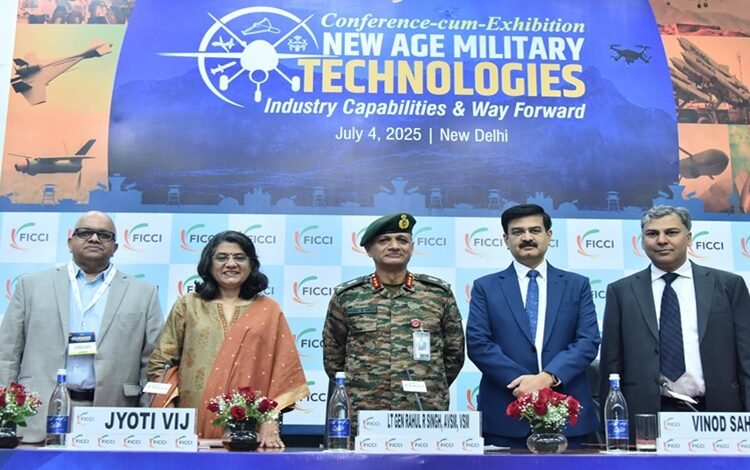Potential tech partnership for AMCA

India is a priority partner for the United Kingdom to develop next generation aircraft technologies with. The UK is already developing powerful radars, advanced engines and avionics systems, for future combat air systems due for operations from the mid-2030s.
UK Government and Industry has set aside GBP2.3 billion for this technology maturation.
The heavyweight UK industries involved see a potential alliance or partnership to develop technologies for future fighter jets for both countries, such as India’s indigenous Advanced Medium Combat Aircraft programme.
At the Farnborough Airshow in 2018, the UK launched its own acquisition programme, which is on track to deliver initial capability by 2035.
“The UK’s Combat Air Strategy is an opportunity to further evolve the strategic relationship that we have with India. And it is about us really opening the door to other countries such as India for conversations so that we can look at future capabilities together,” said Fleur Thomas, Head of Exports (Security, Policy and Operations) at Ministry of Defence.
“We view developing combat aircraft and their technologies as an international and strategic initiative. The UK is particularly interested in jointly developing advanced propulsion systems with India, sharing the intellectual property generated,” added Savraj Sidhu, Comms & International Lead of the Ministry’s Combat Air Acquisition Team.
The UK defence industries, including propulsion experts Rolls-Royce plc, have started working on the early stage of the mega GBP2.3 billion R&D programme, known as the Future Combat Air System Technology Initiative (FCAS TI).
The Tempest concept unveiled at the Farnborough Airshow shows the class of capability and technologies the UK is looking for. This includes very powerful radars, advanced stealth, avionics systems to replace today’s technology, such as hydraulic actuation with future technology, such as electrical actuation.
At the moment, there is a flexibility to change FCAS TI depending on partners’ requirements, said Conrad Banks, Chief Engineer of Future Defence Programmes at Rolls-Royce.
“The computing and avionics systems of future aircraft are going to be extremely powerful and will require a lot of energy,” said Banks. Future aircraft will need to be jointly developed to meet partners’ requirements and incorporate the technology they are developing.
“Future air systems are increasingly going to include direct energy- and laser-based weapons, as well as network connected weapons. We are developing an integrated power system – from propulsion to power distribution to enable this,” Banks explained.
“As an example, we are fusing powerful magnets onto the engine shafts to enable electric starting and a far more efficient and powerful method of generating electrical power,” said Banks, giving an insight into what is to come from future aircraft engine. These embedded electrical starter generators will remove the gear box, mechanical gears and conventional transmission from future engines.
“We are developing a propulsion system that is going to be more reliable, improve fuel efficiency and be far more integrated,” he said, which would reduce both production and operating costs for air forces.
“We are moving into the next generation stage of technology. Radars, engines, weapons and communication systems will be taken to the next level,” Fleur said at the Aero India 2019 held in Bengaluru 20-24 Feb 2019.
“The technologies to be developed as part of the UK’s Technology Initiative will find their way onto the Typhoon (jet fighter), keeping it as a leading world class capability,” she elaborated.
“The UK views Typhoon, because of its growth potential, as a good platform for demonstrating these future advanced technologies before evolving them further for future aircraft,” she said.
Looking at future aircraft, the timeline of 2035 is not far off, given the long lead time in developing technologies and integrating them together.
Yet some of the technologies and sub-systems being developed under FCAS TI could find themselves on aircraft earlier, within the coming decade, on both UK aircraft and potentially India’s aircraft. If required, the development of these critical components could be accelerated, according to Banks.
Banks sees the final concept of this future aircraft incorporating inputs from partner countries’ advanced defence programmes.
FCAS TI is designed to incorporate partnerships with other countries from the onset, with countries already involved. For India, the UK Government has initiated early discussions to understand India’s interest.
Fleur and Sidhu recognize that both the UK and India have some very capable technologies which the UK would be interested in collaborating on. Several of these technologies were exhibited at the Aero India by industries from both countries, including Rolls-Royce. fiinews.com









